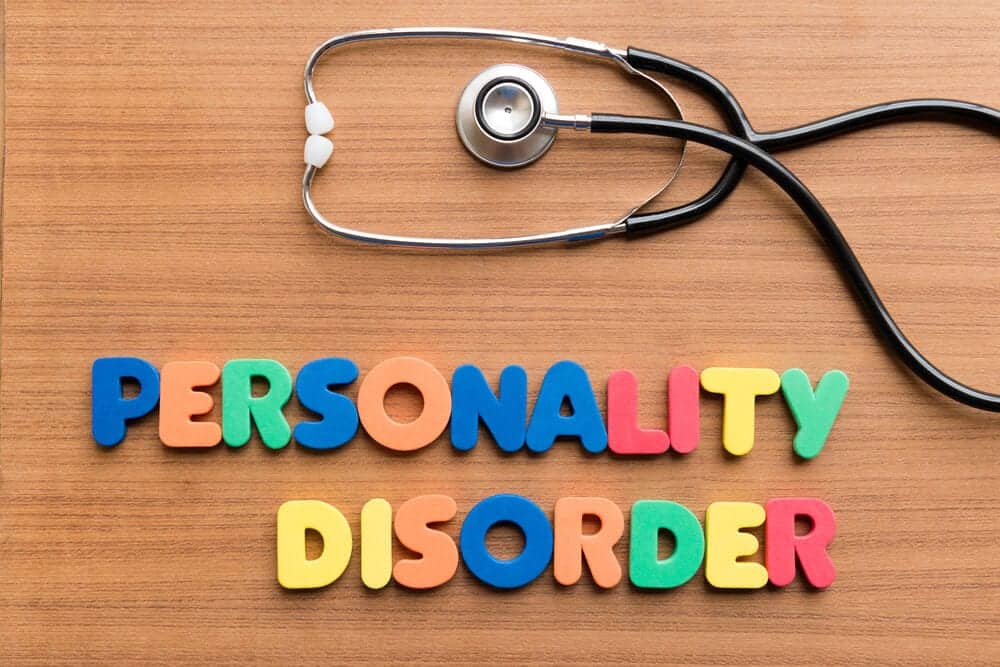
If you have a teenager, you probably have experienced the sometimes-erratic behavior that comes along with the very nature of the teenage years. The emotional and physical changes that children between 12 and 15 experience can sometimes create what may be thought to be an alien child living in your home. Not only does some of the strange behavior seem odd to adults, although we probably experienced it all as well, but to teens themselves, the new thoughts, feelings and emotions can be confusing.
As teens begin puberty, their brains begin to release gonadotropin-releasing hormone or GnRH which ignites the pituitary gland to produce and release gender specific hormones. This rush of hormones kicks off physical and emotional changes that some teens (or the adults around them) are simply not prepared to handle. Unfortunately, in some teens, this is also the time that mental health issues can arise and a teen personality disorder can become evident.
With early diagnosis and treatment, teens can learn to manage many of the mental health issues including borderline personality disorder, schizophrenia, depression and anxiety, and to overcome the challenges associated with these issues as they move into adulthood. However, part of the challenge that teens, parents and healthcare professionals face is knowing what is normal teenage behavior versus something that may be more serious and which requires additional treatment.
Of course, personalities vary as drastically as do personal preferences, likes and dislikes, and histories. However, there are some traits which are typically associated with all, if not most, teenagers. Let’s look at some “normal” teenager behaviors versus behaviors that may be concerning and cause to seek additional help from a qualified professional:
Typical Teen Behavior
- All teens seem
to become more self-conscious about their physical appearance at this age and
more aware of themselves versus others. This would be considered normal
adolescent behavior.
Concerning behavior
- A sudden obsession with appearance or weight, excessive
exercising, change in eating or fascination with body parts.
Typical Teen Behavior
- At this age, it is normal for teens to engage in
occasional risk taking and experimentation, testing out the boundaries and
succumbing to peer pressure.
Concerning Behavior
- It should raise some concern if this occasional risky
behavior becomes more frequent, serious and more dangerous.
Typical Teen Behavior
- Teenagers tend to sleep more often and have a healthier
appetite.
Concerning Behavior
- Any sudden change in either extreme of sleeping
excessively or not being able to sleep at all should sound an alarm.
Typical Teen Behavior
- Teens typically want to spend more time with friends
than with family during this stage in life.
Concerning Behavior
- If a teen suddenly wants nothing to do with either
family OR friends, this may be a sign of a bigger issue looming.
Typical Teen Behavior
- A teen’s true personality is beginning to develop. At
times, it may be a bit quirky or even eccentric.
Concerning Behavior
- Eccentricity and quirkiness are to an extreme, causing
a teen to have unnatural thoughts or tendencies.
As the saying goes, kids will be kids. This phrase can be used to describe much of the behavior that parents see and experience in their children when they are young. However, it is when those kids turn into teenagers that things can drastically change, making parents and caregivers uneasy and in fact questioning, “who is this person?”
In order to shed some light on this question, let’s look into this concept a bit further. One of the mental challenges that can afflict teens has been labeled Borderline Personality Disorder. Before diagnosis, this mental issue may be especially difficult for families to understand. BPD as it is referred to, is strongly debated in the world of mental health and many experts are uncertain whether teens can in fact be diagnosed with borderline personality disorder.
Many of the symptoms of BPD in young people resemble “normal” teenage behavior: impulsivity, relationship issues, and frequent mood swings. However, the difference may be in the intensity of the mood swings, or the ferocity of the relationships or the extremity of the behavior. Because adolescence is characterized by moodiness and transformation anyway, properly diagnosing BPD can be extremely difficult for clinicians, let alone concerned parents.
According to the Diagnostic and Statistical Manual of Mental Disorders, a teenager may be diagnosed with Borderline Personality Disorder when abnormal personality traits are “pervasive, persistent and unlikely to be limited to a particular developmental stage”, and must be present for a minimum of one year. In other words, the behaviors are extensive, rather than occasional, they constant and repetitive, and probably are not related to just being a kid.
As confusing as this may sound to you, imagine how it may feel to the teenager experiencing certain feelings and emotions. So, what types of behaviors would be characterized as BPD? Obviously, from what we know so far, they are above and beyond “normal” teenage behavior.
Typically, experts will not consider BPD as a diagnosis in teens until five or more of the following are present and prevalent:
- A desperate need to escape and evade a severe feeling
of abandonment. Whether in fact real or imagined, the teen will feel a deep
sense of insecurity about people and relationships. They may be preoccupied
with distrust of others, being left alone, and rejection. Because of this lack
of trust, it may be difficult to engage with the young person to even persuade
them to seek the advice of an expert and to receive treatment. - Teens suffering from a personality disorder will in
fact idealize a person when they do find someone that they can trust. However,
due to the instability of relationships that they do create, this person can
easily and quickly lose their place of esteem if the teen feels disappointed,
rejected or devalued. - Although self-image and in fact, a very poor view of
self is relatively normal in teens, dramatic fluctuation in a teen’s opinion of
self may be an indicator of a more severe issue. Teens have a difficult time
identifying their own worth, may feel empty and void of any positive values,
and a dependency upon others to make them feel whole. - It is somewhat normal for teens at this point in their
lives to push the boundaries and test the limits. However, when the risky
behavior crosses the line into intentionally hoping for self-harm, a
personality disorder may be present. Teens may engage in substance abuse, risky
sexual activities, bulimic episodes, drive recklessly and even perform
daredevil-like stunts, tempting fate. They may even display suicidal tendencies
or speak about attempting suicide. Because a teen with BPD places such a high
value and importance for self-worth on relationships, when they fail or there
is conflict, these teens are then highly susceptible to suicide. - Separation, abandonment, lack of control and a poor
self-image all lead teenagers with a personality disorder to self-mutilation.
Although they may not have the desire to die, by cutting or harming themselves
physically, they feel a sense of relief or in fact, a way to control a
situation which they feel may be out of their control. Unfortunately,
self-injury can be contagious among peers. One teen who may be struggling with self-identity
witnesses another who has found relief in it, could be persuaded to begin the
behavior as well as a means to feel “normal”. - Again, although mood swings are “normal” in a
teenager’s life, those swings which are extremely dramatic, lasting for an
extended period of time or which may have occurred over something seemingly
insignificant may be cause for concern. The instability of the thoughts and
emotions makes the teen place a higher value on minor issues and concerns than
may be necessary and to react as they see appropriate. - Anger, extreme hatred and uncontrolled outbursts of
displeasure may be brought on by the feelings of abandonment, emptiness and
lack of control. Teens may be frustrated with the lack of understanding of
these feelings and it commonly is expressed through extreme animosity. - Lastly, teens with BPD may feel detached from their own
bodies, or a sense of being in a dream-like state on a regular basis. These
psychotic episodes should be taken very seriously, prompting a call to a health
professional immediately.
Many mental health professionals are reluctant to diagnose Borderline Personality Disorder in teenagers for fear that they will be prejudged and possibly stereotyped. Throughout history, mental illness and disorders have been stigmatized causing sufferers to be discriminated against at work, school and in social situations. We all recognize that the teenage years bring enough turmoil; why traumatize a teenager unnecessarily with the wrong diagnosis.

However, in the event that a young person is displaying some of the unhealthy behaviors associated with BPD, it is critical that a proper diagnosis be given and treatment plan developed in the teen’s best interest. There are many very important advantages to diagnosing BPD at a young age:
- The prescription of medication for the disorder may be
minimized, utilizing therapeutic treatment instead. - By identifying the root of the actions early, hopefully
the negative or harmful behaviors can be reversed or changed before they are solidified
into habits in adulthood. - Intervention at an earlier age may prevent the disorder
from interfering with life. If left untreated, a personality disorder has the
possibility of derailing a student’s ability to function in society, limiting
education, affecting relationships and possibly sending them headfirst into
other addictive behaviors.
When a personality disorder is properly managed early on, it may also lessen the burden on the healthcare system by those suffering. If not properly diagnosed and treated, adults with BPD tend to frequent emergency rooms, may be hospitalized often and are at a higher risk of self-harm and even possibly suicide.
Studies show that 1 out of 5 teenagers may be at risk for a mental health issue and this figure seems to be increasing. It is believed that several factors may be responsible for this increase including academic pressures to succeed, excessive use of technology (too much screen time and not enough socialization), social media and a teens ability to constantly compare themselves to others, and even parents’ well-meaning intentions to shield adolescents from disappointments, failure and rejection. Teens have not yet developed that “thick skin” which will enable them to effectively manage life and adulthood and the feelings and emotions that they may be experiencing as teens.
Aside from the Borderline Personality Disorder previously discussed, there may be other types of personality disorders that may affect your teen including Narcissistic Personality Disorder, Antisocial Personality Disorder, Histrionic Personality Disorder, Dependent Personality Disorder, and Obsessive-Compulsive Personality Disorder. Each of these mental health issues will be characterized by slightly different traits, but ultimately, it will be the responsibility of a healthcare professional to determine the diagnosis and severity of the issue as well as the best treatment plan for your teen.
By “management” of their life and feelings, of course, we are referring to therapeutic treatment at a qualified, reputable treatment facility. Through therapy, teens will participate in both group and personal activities that stress the importance of self-image, an appreciation for their own identity and self-reliance, team building and healthy relationships, anger and emotional control, and how to recognize and manage their feelings and emotions. Although there may not be a cure for any of these mental health issues and personality disorders, therapy will guide your teen to better handle their anxiety, emotional instability and feelings of isolation to help them become active, productive members of their families, community and society, leading successful lives.
By placing your teen into a therapeutic program at Beachside, you can ensure that he or she receives the treatment that will best help him/her to manage and overcome the challenges associated with a personality disorder and to lead a normal, healthy life into their adulthood.
Reach out today to find out how Beachside can help manage your teen’s personality disorder.




